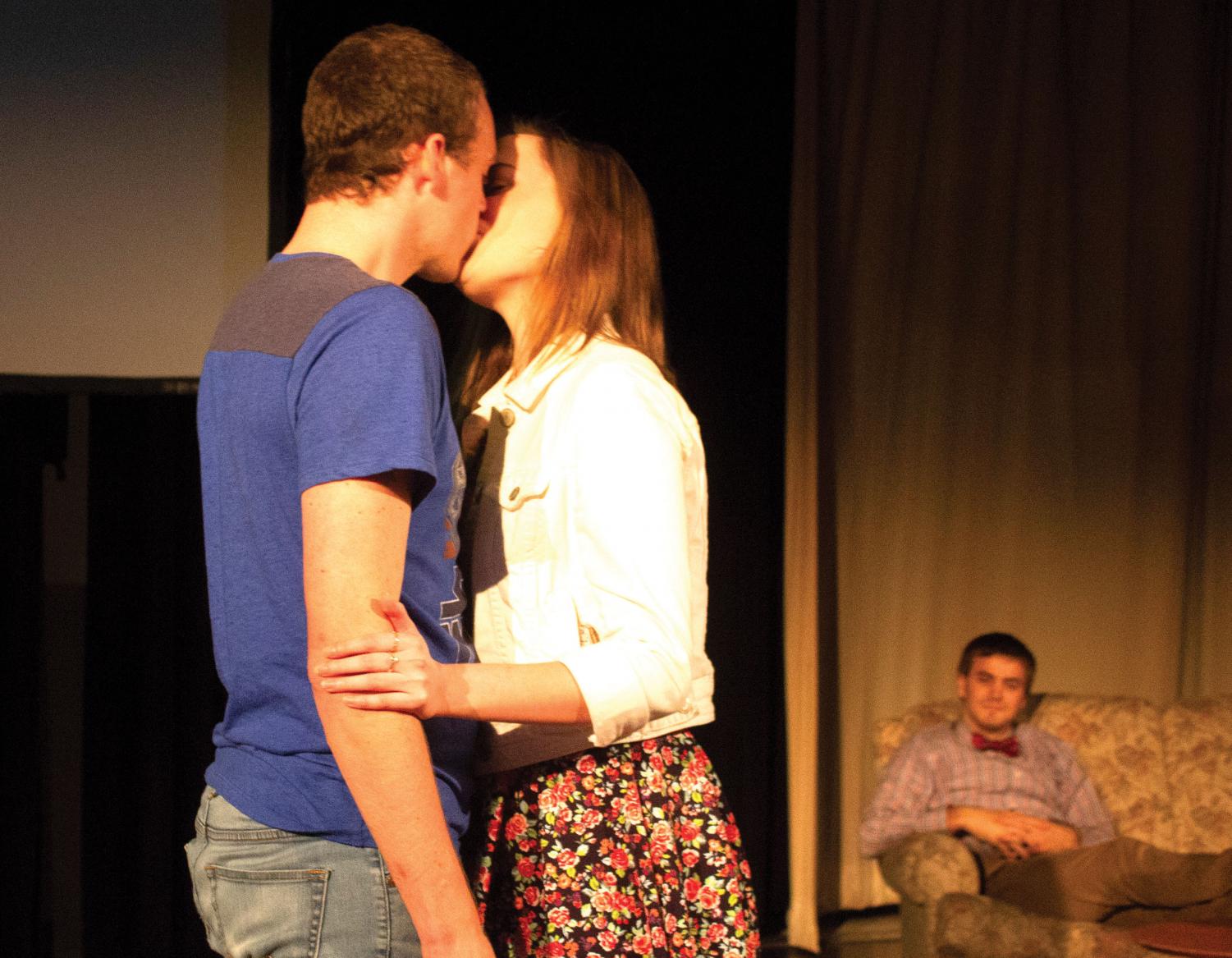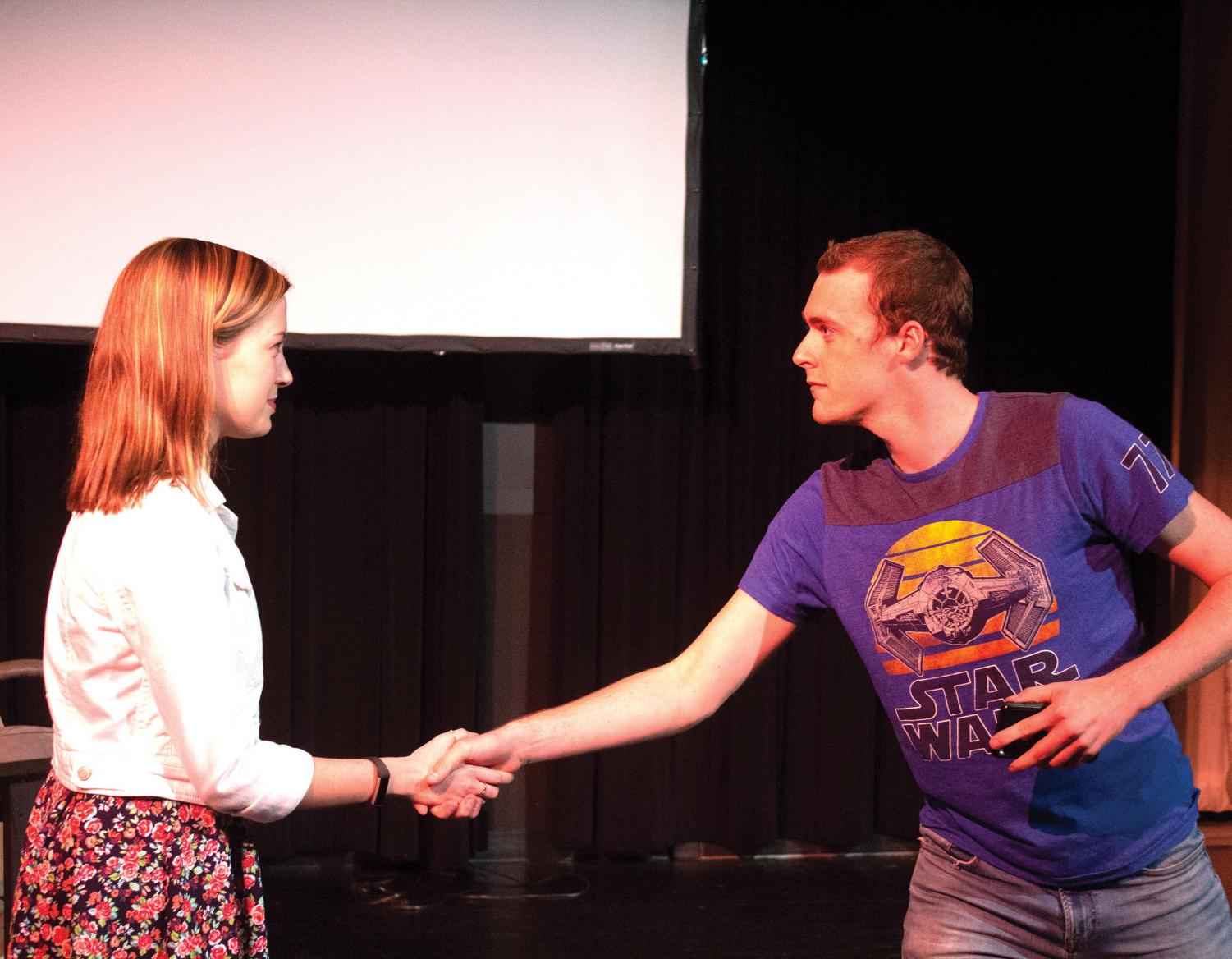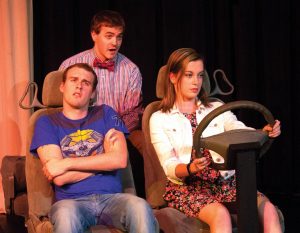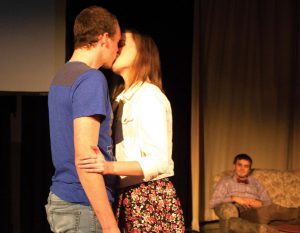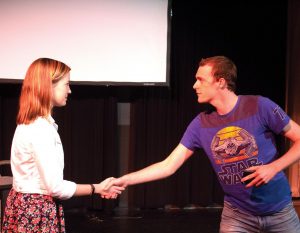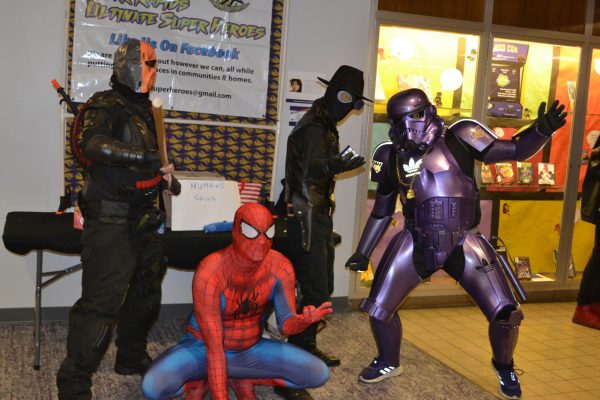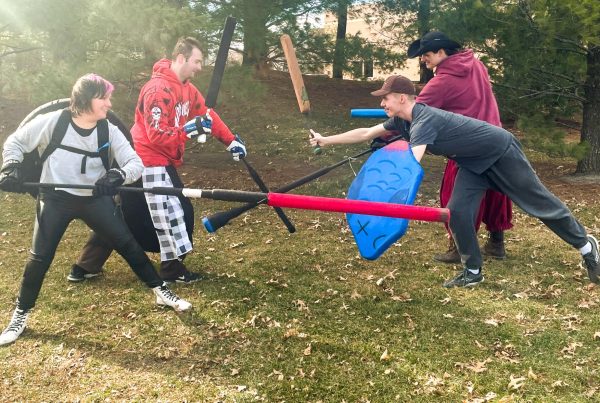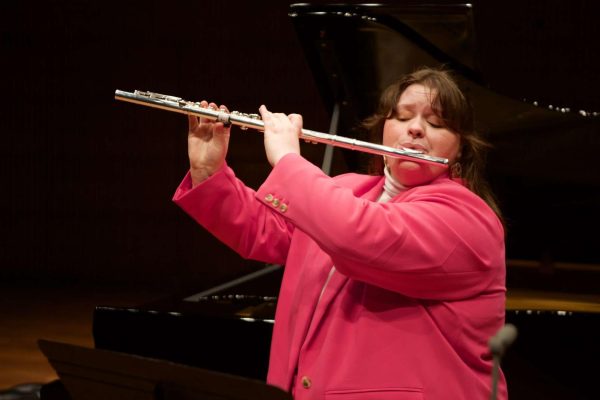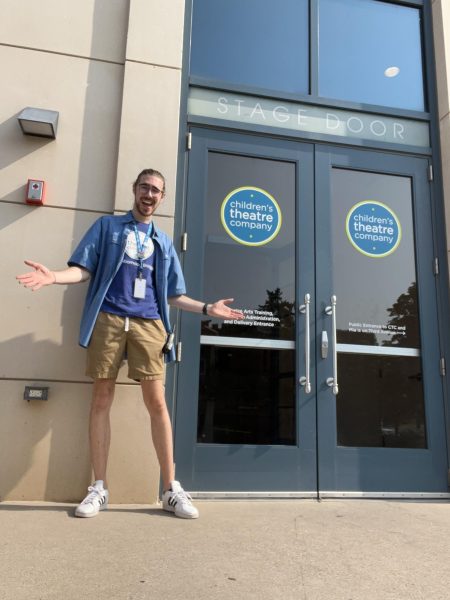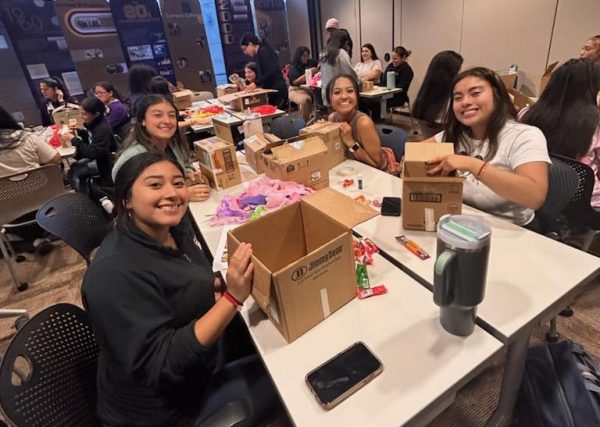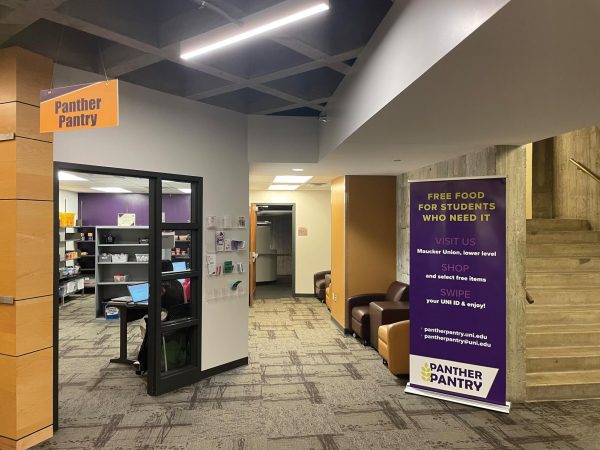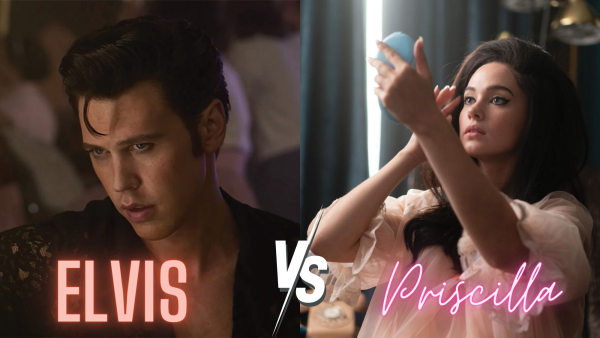Play portrays romance on the spectrum
Oct 15, 2018
This past weekend, the play “Aut is Love” was performed three times in the Interpreter’s Theater in Lang Hall.
The play was written and directed by Nathan Selove, serving as his master’s thesis. Selove also acted as the narrator in the play.
“It’s based on the romance between myself and my now-wife,” said Selove, a second-year grad student in the communications department, focusing on performance studies. “We’re both on the autism spectrum. It’s about how autism affects our communication and how autism impacts the way we interact with each other.”
There are three main characters in the play: past Nathan (portrayed by Austen Carnahan), Nathan’s now-wife Jess (portrayed by Erin Hassenstab) and present-day Nathan (portrayed by himself) who narrates the play. Tim Matheson played a variety of roles, including Nathan’s dad, a therapist and a cashier.
The play begins with Nathan and Jess meeting for the first time. The couple experiences milestones in their relationship like saying the first “I love you” and getting married at the play’s end (which happened in May 2018).
“Being autistic and trying to operate in a romantic world built by neurotypicals is hard,” present-day Nathan explains. “Neurotypical means that you don’t have any special powers when it comes to the way you think. It’s the autistic community’s equivalent of saying you’re a Muggle.”
Nathan and Jess converse about TV shows, feminism and social justice. Since the play’s setting begins in 2015, it includes references to Trump’s presidential candidacy, including comments like, “He would never win the general.”
“Not absolutely everything is word-for-word, but it’s all based on true events that happened, true conversations that happened,” Selove said.
Present-day Nathan reacts to things he said in the past, often by cringing or face-palming on stage.
Nathan and Jess experience highs and lows like any other couple. Some of those challenges are small, like being bothered by the other’s use of incorrect grammar. Other challenges are much bigger, like their decision to move from Virginia to Iowa together.
“Autistics are not very good with change,” present-day Nathan narrates. “We had spent all of this time learning how to talk to neurotypicals in Virginia. And now we would have to learn to talk to neurotypicals in Iowa.”
The play ends with a call to action.
“Our stories deserve to be heard, because right now there are millions of autistics around the world that believe that the only thing standing between them and love is their identity — and they need to know that that love is possible,” present-day Nathan says. “They need to know that their love matters. It’s up to all of us to spread that message.”
It took Selove about a year to write the play. He started by writing a few scenes for a class.
“The desire to write it basically came from the realization that often times when you’re seeing a romance on some kind of movie or on a TV show, there’s often the implication of neurotypicality, basically the implication that everybody’s definitely neurotypical,” Selove said. “There aren’t a lot of narratives about autistics being in relationships together.”
Selove takes issue with the fact that many media portrayals of autistics are only researched by talking to professional psychologists without ever reaching out to actual autistics. One portrayal that Nathan thinks was accurate was the movie “Mozart and Whale,” which he watched as a child.
“It’s a romantic comedy about two autistics,” Selove said. “I found myself relating to both [characters] a lot, and I also saw them have a lot of issues in their relationship clearly. But I also saw, in the end, a successful relationship. But there isn’t enough of that—there [aren’t enough] portrayals of successful autistic relationships for young autistics. I feel like something like the play I’m doing now would have kind of made me more confident.”
Nathan also thinks that Sheldon in “The Big Bang Theory” and Dr. Temperance Brennan in “Bones” are two accurate depictions of autistics, even though they are not identified as such.
“I often find that characters on TV that they actually don’t directly tell you that they are autistic but are clearly autistic are often a lot more humanizing and genuine,” Selove said. “We have a saying in the autism community: ‘You met one autistic, you met one autistic.’ We’re all different. We all have different aspects that affect us. There isn’t one autistic experience. There’s a lot of autistic experiences.”
When it came time for auditions, Selove decided against disability-specific casting. He didn’t think it was necessary to only cast autistics as autistics since whatever actors he chose would have access to a real-life autistic.
Selove plans to upload a recording of his play to his YouTube channel (Nathan Selove) where he wants to continue to advocate for the autism community. He also would like to send his script to a publishing company.
“I think that a comedic portrayal of an autistic relationship is going to help both autistics understand that such a thing is possible and neurotypicals understand that such a thing should not be scoffed at,” Selove said.



